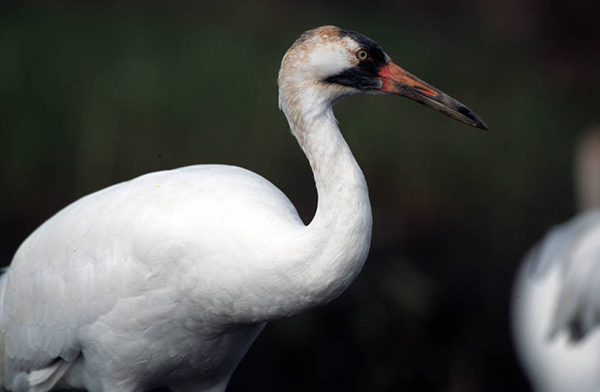For Whooping Cranes, learning to migrate is an important step toward recovery

In 1916, the United States and Canada signed the Migratory Bird Treaty to protect birds across state and national borders. To celebrate 100 years of bird conservation, each month will feature a native Wisconsin bird species that has benefitted from the protection and cooperative conservation set forth in the Migratory Bird Treaty. For more information on the Migratory Bird Treaty Centennial and other Birds of the Month, visit dnr.wi.gov, keyword "bird treaty."
October's Bird of the Month is the Whooping Crane (Grus americana). Extirpated from the Midwest by the early 1900s but currently being reintroduced to the eastern half of the United States, this species holds the distinction of being America’s tallest bird. Wisconsin is working with other states and partners to restore a population of whooping cranes to their Wisconsin breeding grounds, southeastern wintering grounds and migratory stopover habitat. Reintroduction methods center on captive breeding and rearing followed by placing crane fledglings with older, free-ranging whooping cranes. Currently, the eastern migratory population consists of about 100 cranes.
- During captive rearing, handlers wear crane costumes and minimize interaction with the crane chicks to prevent them from imprinting on humans. In recent years, the emphasis has shifted to raising chicks with captive whooping cranes parents as opposed to costumed humans.
- Since the inception of the reintroduction program, whooping cranes have been taught to follow an ultra-light aircraft in order to complete the migration to their Florida wintering grounds. More recently, this approach has been supplemented with releases of young cranes into groups of sandhill and whooping cranes, which then teach the young cranes how to complete the migration naturally.
- Protection of appropriate stopover habitat along the migration route and breeding habitat on private lands is critical to the crane reintroduction effort.
- A small, natural remnant population of whooping cranes breeds in Wood Buffalo Park in Canada and winters in Texas.











